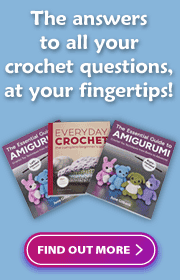This post was originally published on my old papercraft site, Folding Trees. Hitachi Japan have created some endangered species animal paper models. I thought I’d try their sea turtle model so I could give you a quick review. The colours printed less vibrantly than shown on the website, although I accidentally printed it onto cheap paper using my printer’s […]

Archive for Category: Paper Crafts
festive star garland
Here’s a seasonal twist on my origami lucky wishing stars tutorial! Make a pile of stars using strips cut from festive coloured papers (try using offcuts of Christmas gift wrap, or recycle pages from holiday magazines), then string the stars into a garland to decorate your tree. To make the garland pictured above, I used […]
Paper Medallions (Tea Bag Folding)
This post was originally published on my old papercraft site, Folding Trees. Tea bag folding is a paper craft that originated in Holland, where many tea bags come wrapped individually in paper packets. By cutting each bag down to a square, the bags can be folded and then combined into a geometric shape, just like in 2D […]
Shadow Decorations
You may have noticed the black papercut trees I made for the background of my Halloween design photos. I was wondering if I could reuse them somehow to create a new tutorial for Folding Trees, and I came up with the idea of using a candle to create a large shadow silhouette of the tree […]
paper weaving
Today I have a new tutorial up at Folding Trees showing how to weave paper strips into a coloured checkerboard pattern. The greetings cards and bookmark I made (above) use strips cut from old magazine pages!
hummingbird pop up card
I’ve just reviewed this pattern for Folding Trees, and here’s the hummingbird card I made. Isn’t it gorgeous? And it looks a lot more complicated to make than it really is! Click through to Folding Trees this week to read my review of the pattern and to enter our contest to win a pattern of […]
tissue paper carnations
This week on Folding Trees, I am running a daily series on different types of paper flowers. To get things started, I followed a few online tutorials to make tissue paper flowers, but the end results looked really childish – not the elegant decorative look I like. So I had a think and came up […]
paper models
This weekend, I made these paper models. They are made from PDF files that you print, cut, fold and glue together. The models are very well designed; cutting out all the parts is time-consuming, but it’s amazing that you can make something so realistic from a couple of sheets of paper! You can now see […]














